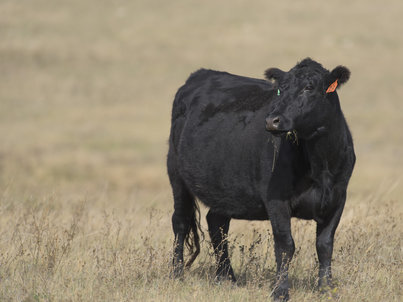Emergency Grazing Options
|
Many parts of the U.S. are suffering from dry conditions, and the Southwest is in the midst of a full-blown drought, while many other parts of the West have had just enough moisture to get by for now, but could easily turn dry, making the developing of strategies to get through these tough times critically important.
Those in the midst of drought, and even those in areas that have borderline adequate moisture, might get through the early summer grazing season using current pastures, but this will put tremendous pressure on pastures during late summer and fall. If producers don’t have a strategy in place to take pressure off of their pastures, serious damage may be done to pastures although the effect may not show up until the following grazing season, when a subsequent lack of forage availability, and resulting poor grazing performance, and further pasture damage will manifest itself. |
 |
Adding to the challenge is that the traditional drought strategy of feeding supplemental hay as a way of stretching pasture is getting increasingly expense because of the increase in demand for hay.
There are other strategies besides feeding expensive hay to help get through dry conditions, however there are varying short-term and long-term consequences for each strategy.
Selling the cowherd is one of those possibilities, however liquidation creates severe long-term challenges, chief among them is the forfeiting on the herd genetic base, and the selling at market low point, and the buying at the market high when the drought subsides. Regardless, judicious selling/culling low performing animals as an initial response to a drought is a good management practice, which provides an operation the opportunity to improve the overall quality of the herd, while lowering forage needs.
If an operation wants to minimize the cost of feeding hay and doesn’t want to sell the entire herd it’s important to understand the options which provide opportunities to manage through the drought.
Here’s the information needed to make a good decision, and the thought process needed to develop an emergency forage plan:
- When do you need the forage resource? Depending upon when you need the forage there are different options, for example forage needed in summer requires a different solution than if forage is needed in the fall or winter. For most operations they can probably get by through summer by using pasture that would otherwise be used for fall grazing, however that will leave an ominous challenge come fall.
- How much water will be available for growing the emergency forage? Will there be irrigation? Will rain typically be available? What is the current soil moisture profile, and anticipated soil moisture profile at time of planting?
- How much forage will be needed? Will the emergency grazing be required to provide 100% of the livestock’s’ nutritional needs? And what class of livestock will be grazed? Etc.
Putting the Pieces together:
For Summer Forage Needs:
- Moxie Teff grass, and Mojo crabgrass used separately or in combination are high quality high yield option, additionally Cover Graze products such as Barkant, T-Raptor, radish etc. are a great option.
- A few words of caution: these options could work well, but like all plants they require a minimum amount of moisture. If you are in drought conditions it is recommended to use irrigation to supplement natural rainfall to help these forage options get established, if soil moisture has already been depleted. Secondly, if the goal is to provide immediate short-term emergency forage, these options don’t require full water, given the goal under these conditions is to provide a quick forage source (not a long-term or perennial forage). Be advised it may not be prudent to use this strategy with certain forage types such as sorghum or Sudan grass as the environmental stress could lead to increase levels of prussic acid poisoning. The Barenbrug products mentioned above do NOT present this challenge and therefore offer a safer emergency forage option.
For Fall Forage Needs:
- In many situations a producer may be able to get through summer by utilizing pastures during summer that would have otherwise been used for late season or fall grazing. The challenge with this strategy is how to make up for the resulting forage deficit?
- There are several options for fall emergency forage, but again to be successful a minimum amount of timely moisture is required. Meaning, full moisture to sustain a crop for a whole growing season isn’t needed, since the crop will be used as an immediate short-term forage source. However, timely moisture (either rain or irrigation) is required to allow germination, emergence, and to get the crop going.
- CoverGraze options include ryegrass (either Green Spirit Italian or annual), and brassicas such as Barkant turnip or T-Raptor hybrid turnip. Additionally, forages such as oats, triticale or cereal rye etc. can be mixed with CoverGraze forage to expand options.
If an operation is expecting to need an emergency forage supply, and doesn’t want to liquidate the cowherd, or feed a lot of hay, the options mentioned above are worth considering. However, they are not without risk, so an operation considering these strategies should begin now to make plans and ask the right questions so an informed decision can be made, and appropriate management can be applied. Also, there is a high likelihood many operations will be looking to take advantage of these strategies, which could make fall seed supply unusually tight, so we recommend purchasing seed needs early.
Bryan Weech

